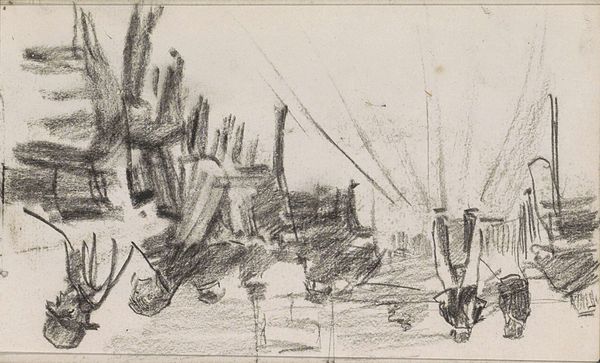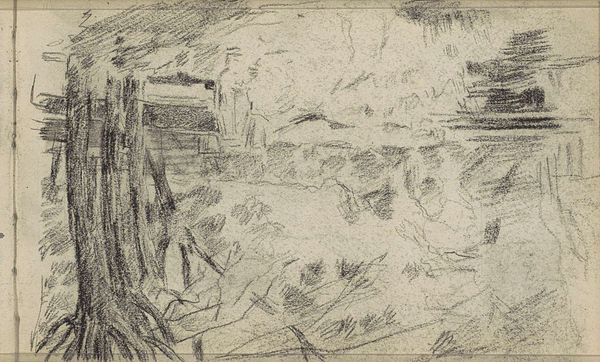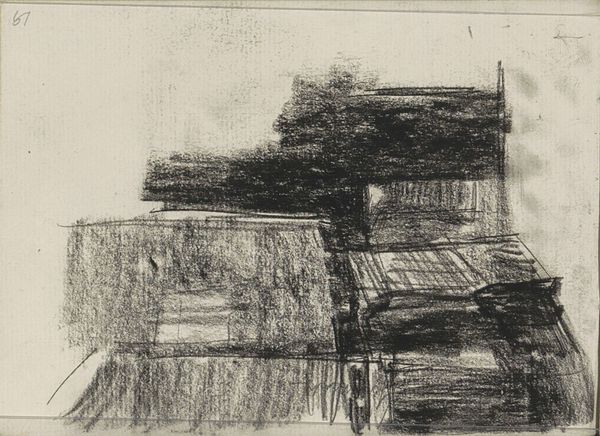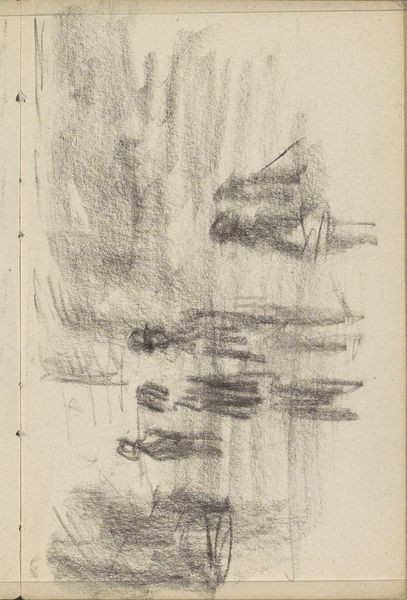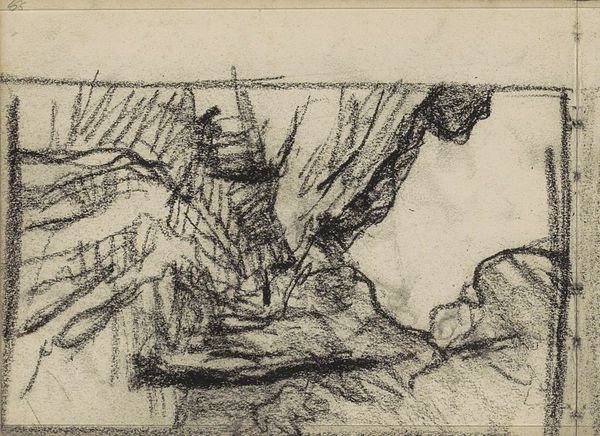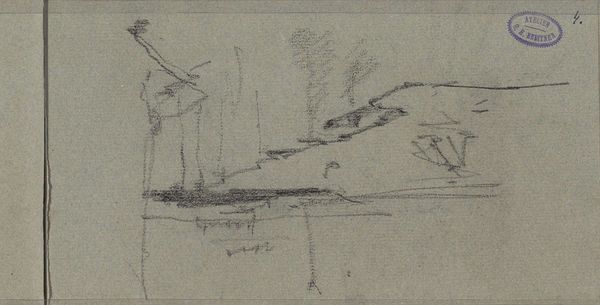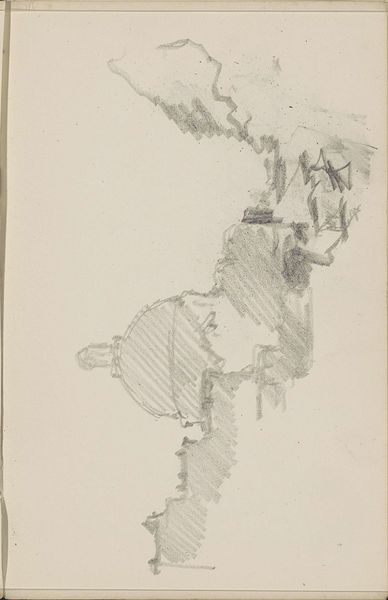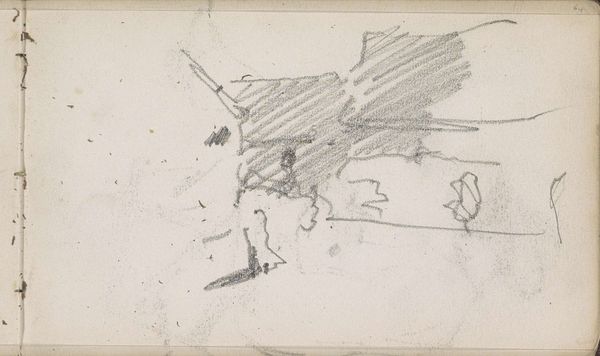
Copyright: Rijks Museum: Open Domain
Editor: This drawing, "Groep zittende figuren, mogelijk aan tafels," by Isaac Israels, probably done between 1875 and 1934, captures a group of seated figures, perhaps at tables. The sketchiness lends it an ephemeral, almost dreamlike quality. How do you interpret this work, especially regarding its composition and the use of light and shadow? Curator: Well, its sketch-like nature is important. Consider the tradition of the "conversation piece" – a common trope, depicting groups engaged in witty exchange, loaded with symbolic gestures and glances. But here, that’s subverted. Editor: How so? Curator: Israels gives us the *idea* of community and interaction without detail, without that symbolism. The loose lines and uncertain forms create a sense of anonymity, perhaps even alienation within the group. Ask yourself, what emotional content do you associate with loosely defined figuration like this? Editor: So, the vagueness becomes the message? Instead of clear symbols of connection, we get a feeling of distance. Curator: Precisely. Israels uses the impressionistic style, its capturing of fleeting moments, to question the very idea of social cohesion. Look at the deep shadows that almost consume some figures. It implies uncertainty in social identity, dissolving into darkness, like fading memory or shared experience. Editor: I see, it’s less about *who* is there and more about *how* they're present, or absent, within the scene. Curator: Exactly. It invites us to consider how we construct meaning from social gatherings, and what’s truly present versus projected or remembered. Editor: I had not considered the absence as symbolic, thanks for this perspective. Curator: Art always reveals the cultural memory, as this drawing certainly does, and often much more.
Comments
No comments
Be the first to comment and join the conversation on the ultimate creative platform.
